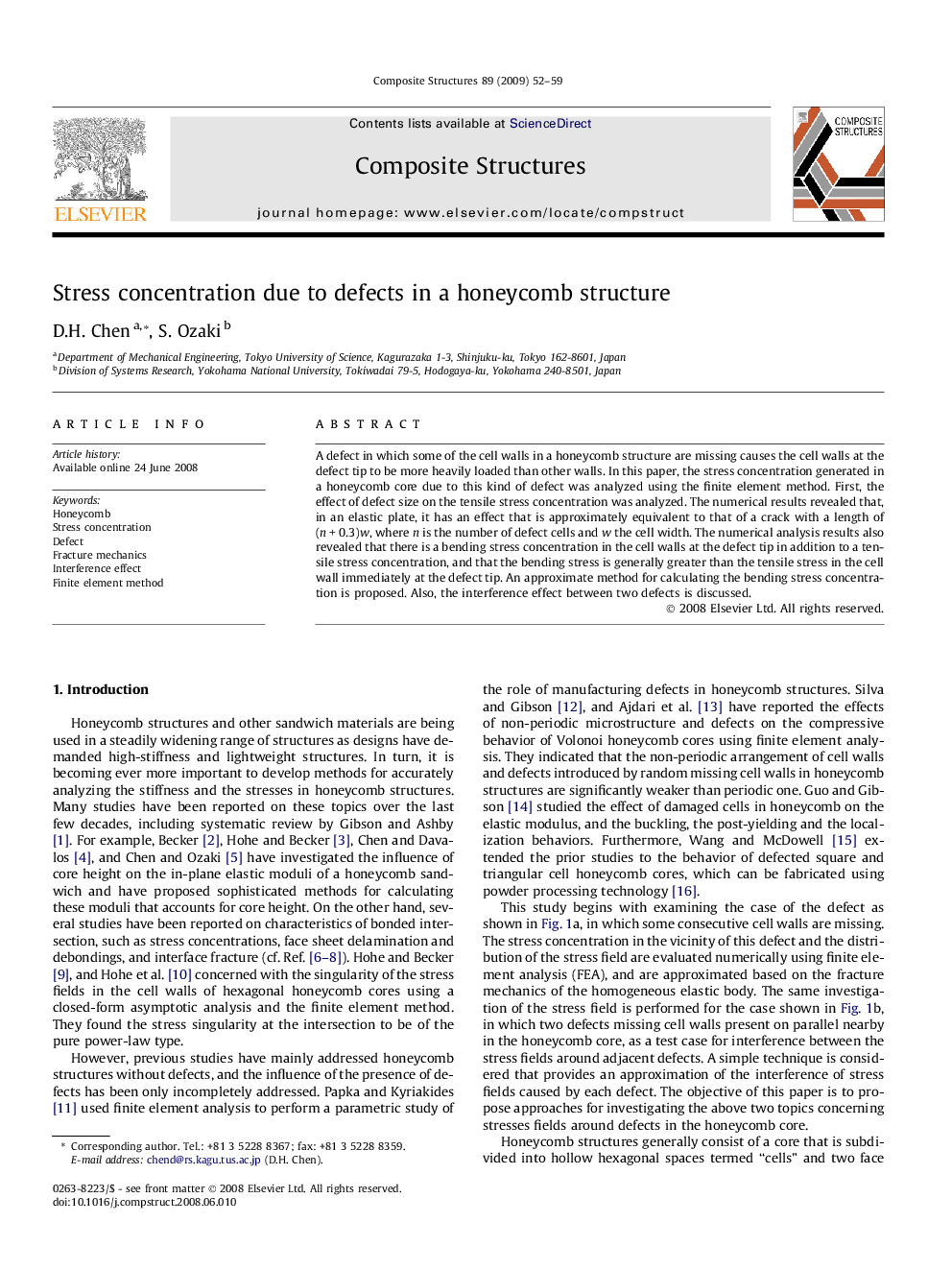| Article ID | Journal | Published Year | Pages | File Type |
|---|---|---|---|---|
| 253541 | Composite Structures | 2009 | 8 Pages |
A defect in which some of the cell walls in a honeycomb structure are missing causes the cell walls at the defect tip to be more heavily loaded than other walls. In this paper, the stress concentration generated in a honeycomb core due to this kind of defect was analyzed using the finite element method. First, the effect of defect size on the tensile stress concentration was analyzed. The numerical results revealed that, in an elastic plate, it has an effect that is approximately equivalent to that of a crack with a length of (n + 0.3)w, where n is the number of defect cells and w the cell width. The numerical analysis results also revealed that there is a bending stress concentration in the cell walls at the defect tip in addition to a tensile stress concentration, and that the bending stress is generally greater than the tensile stress in the cell wall immediately at the defect tip. An approximate method for calculating the bending stress concentration is proposed. Also, the interference effect between two defects is discussed.
